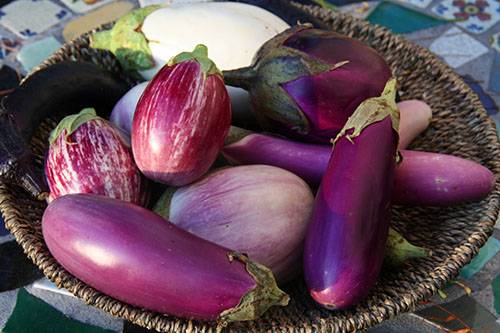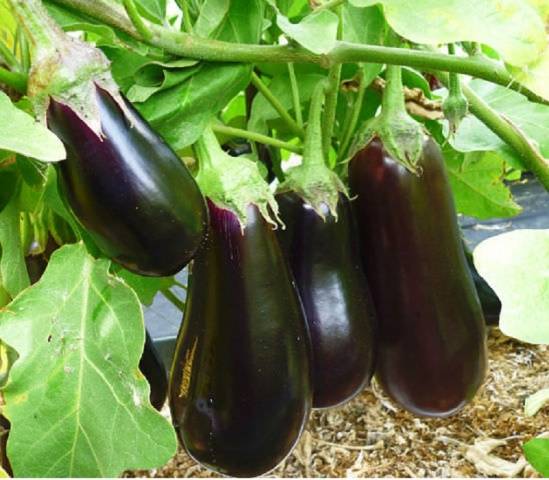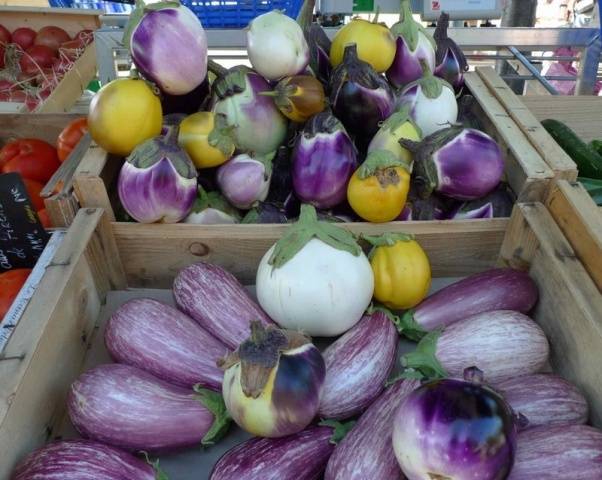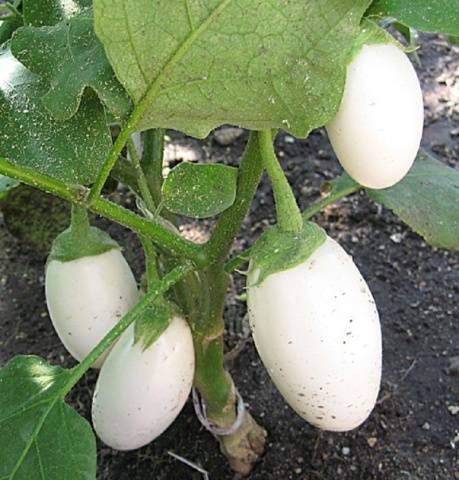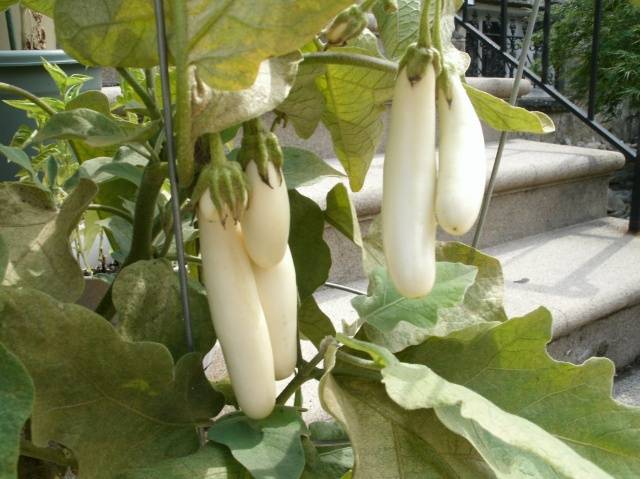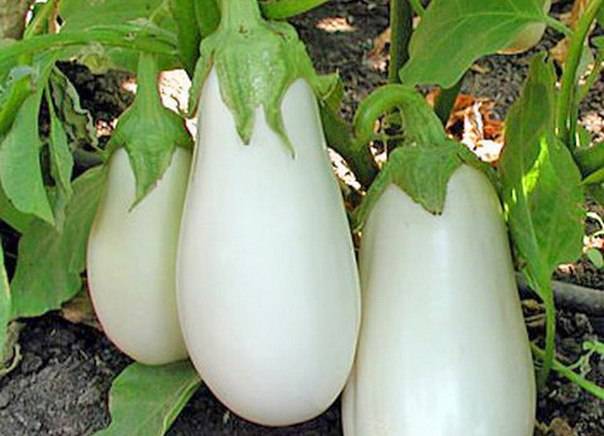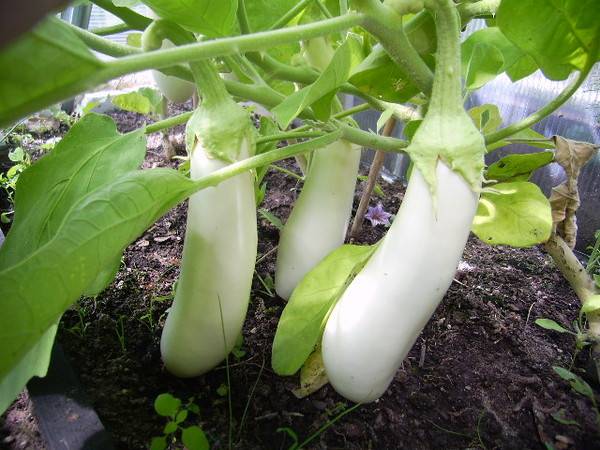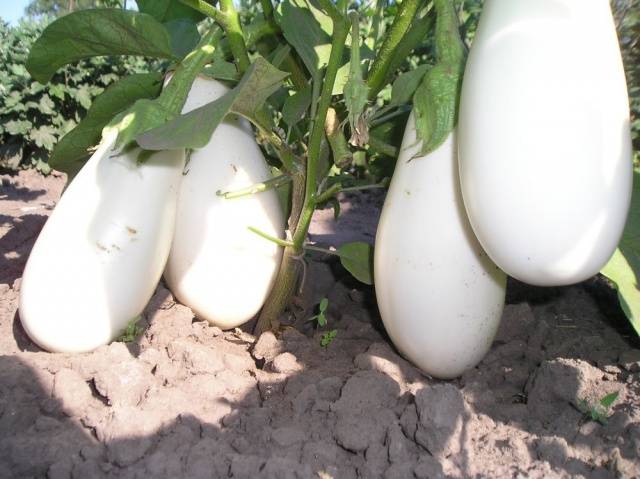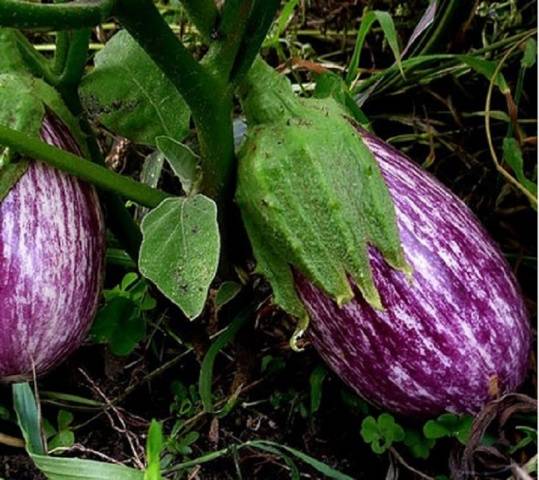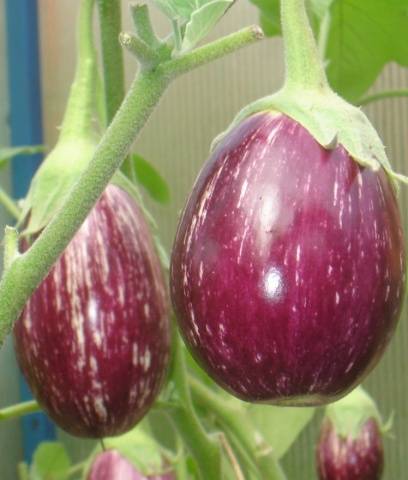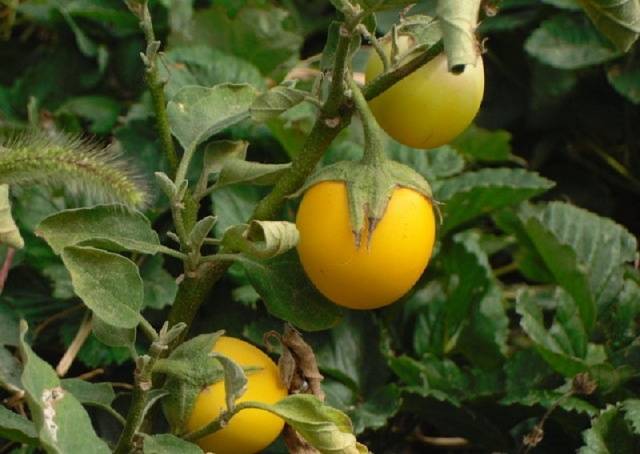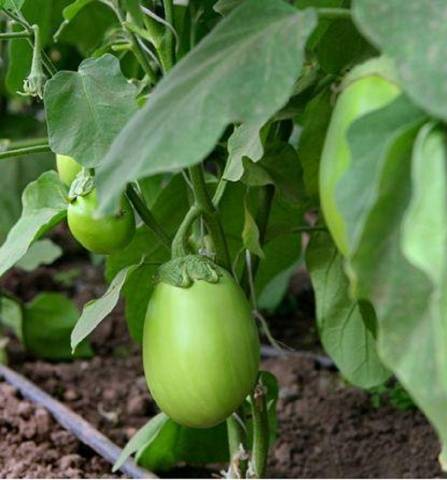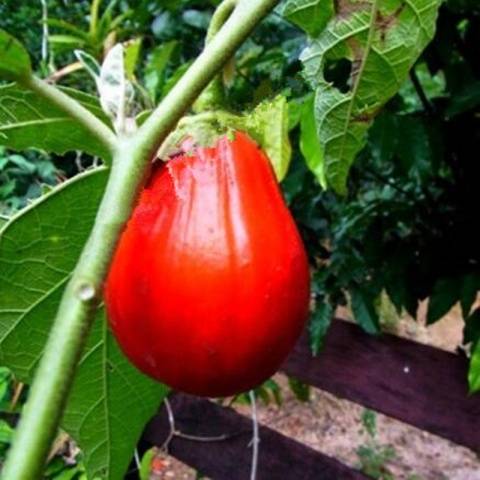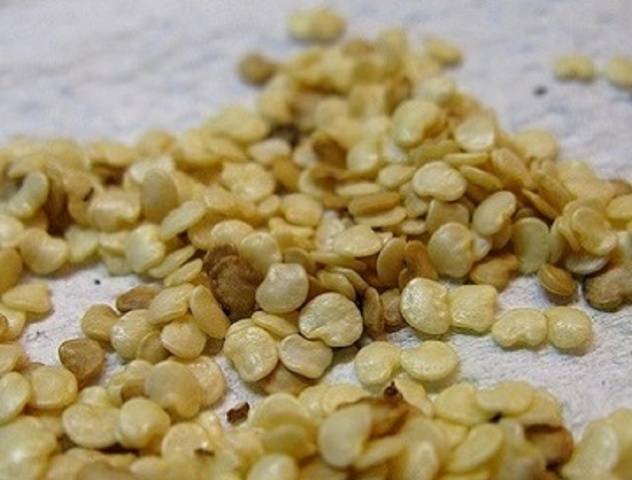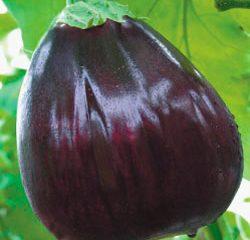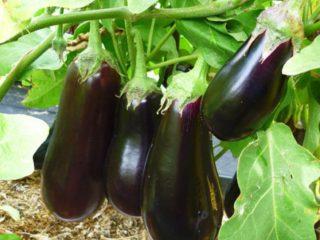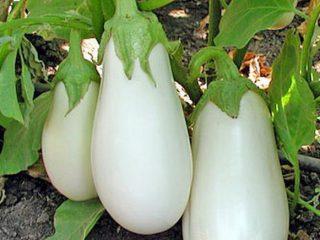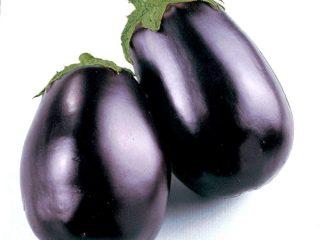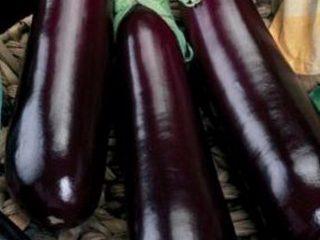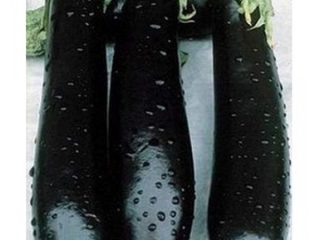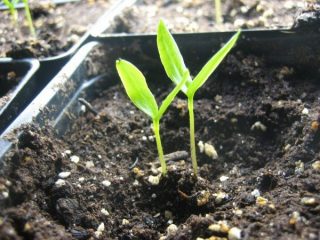Content
Every gardener has a list of vegetables to grow in open ground. Among the most popular are eggplants. Eggplant varieties for open ground are of interest not only because of the large selection of shapes and colors. The main criterion remains unpretentiousness, high yield and nutritional value. The list of varieties suitable for growing in open ground is constantly growing. Breeders around the world are working to create more efficient types of eggplant.
The new developments are based on the following properties:
- fertility;
- taste qualities;
- stability during transportability and storage;
- ability to produce crops in unfavorable conditions;
- ability to resist pests and major diseases.
In addition, to please gardeners, breeders are developing new varieties with different shapes and colors of fruits. From the usual dark purple hue to red, yellow and white - the color palette of the common garden eggplant. Those who like to collect seeds themselves need to grow regular varieties. But hybrid seeds are not suitable for sowing next year.Or rather, it is quite possible to sow and wait for the fruits, but the properties of such plants will be original, not improved. There are several reasons to choose the best seeds. Eggplants are quite whimsical:
- cannot withstand frost;
- require optimal temperature conditions;
- they produce good yields in fertile soil;
- need good lighting;
- cannot tolerate a lack of watering.
Therefore, the choice of variety must be approached carefully, checking all varietal indicators with the capabilities of your site.
Basic criteria for selecting varieties
Before buying eggplant seeds for growing in open ground, you need to pay attention to certain properties of the vegetable:
- Fruit ripening period. The most reliable are seeds of early ripening varieties. Currently, you can select high-yielding ones at the same time. But, if there is a choice between the ripening period and the number of fruits, you need to choose the first. Eggplants are very sensitive to changes in external conditions, the effects of fungal microflora, and insects. Therefore, the optimal solution is to get the harvest before the peak of activity of a number of parasites.
- Shape and size of the bush. For open ground, it is good to choose medium-sized plants whose bush height does not exceed 65 cm. At the same time, good branching of the bush is appreciated. This parameter affects the number of ovaries and fruits.
- Quality seeds. Seed material should be purchased from trusted manufacturers. This will ensure that they are properly processed and disinfected. After purchase, you can independently check the seeds for germination, and also soak them for a day before sowing.
Many people find it difficult to choose one of the varieties. If you need to provide your family with healthy vegetables, you can successfully grow high-yielding varieties and hybrids of regular color and shape.
Seeds of such varieties must be sown in early spring. Varieties with familiar colors received excellent recommendations from vegetable growers:
- Alekseevsky;
- Long purple;
- Vicar;
- Purple miracle;
- Banana;
- Black Moon;
- Diamond;
- Czech early;
- Faith.
But many vegetable growers like to experiment and decorate their garden. Recently, eggplant seeds with unusual colors have become very popular. Therefore, gardeners begin to grow white, yellow, red, and striped eggplants. These vegetables perfectly decorate the table both in summer and winter. In addition, the taste of such varieties is also excellent.
The best varieties of white eggplants
Until recently, many people did not know about this type of eggplant. Now the seeds of white varieties can be purchased quite easily, and you can see their appearance in numerous photos. White eggplants have a unique taste, reminiscent of champignons or chicken. The absence of bitterness and a large number of seeds makes such fruits an unrivaled gift for housewives.
"White Egg"
High yielding super early variety of white eggplants. The fruits are ready for consumption 65 days after full germination.
They have the shape of an egg, which was the reason for the name of the variety. The weight of each vegetable reaches 200 g. Pleasant mushroom taste and aroma make this type of eggplant very popular. Grows well in open ground, withstands sudden changes in temperature and transportation.The fruiting period is long, which allows for a rich harvest. Has good resistance to tobacco mosaic.
"Pelican"
An early-ripening hybrid with saber-shaped fruits. The bush is low to 70 cm, medium leafy. In open ground it grows best in warm regions. The weight of the fruit is small - up to 200 g, but the taste is excellent. The plant is very beautiful. During the flowering period, it is covered with purple flowers, and then snow-white fruits are added to them. Resistant to common eggplant diseases.
"Swan"
Mid-season variety among white eggplant. Ripens in 110-115 days. Seeds are sown in mid-March. It has good keeping quality, high yield, and excellent mushroom taste. Tolerates the hot season and exposure to pests well. From 1 sq. m of soil, up to 18 kg of cylindrical fruits weighing 250 g are collected. The bush is compact, 70 cm high, powerful.
"Iceberg"
Mid-season variety with oval-shaped fruits. The bush is spreading, but low (up to 60 cm). Fruit weight – 250 g, pulp without voids, tender, without bitterness. Advantages:
- flameproof;
- good transportability;
- resistance to viral diseases.
The variety produces a stable harvest of high quality fruits.
"Bibo F1"
A favorite of many gardeners for its incredible productivity, ability to resist diseases, and large fruit. A mid-season hybrid with oval-conical fruits that reach a weight of up to 500 g. The fruit pulp is white and tender. Seedlings are grown without picking - this makes it possible to get a harvest earlier. The bush is tall and requires staking. The abundance of ovaries guarantees a good harvest throughout the entire fruiting period.
Eggplant - striped
Among the vegetables with this color, the most familiar are “Striped Flight” and “Sailor”. The interesting coloring of the fruits makes them an original decoration for dishes. Try growing grateful varieties:
"Striped Flight"
A mid-season variety with excellent heat resistance, maximum fruit set in all weather conditions and reliable resistance to viral and fungal diseases. Almost no thorns. The bush is spreading with a large number of ovaries. The fruits are cylindrical, weighing up to 200 g. The pulp is almost without seeds, there is no bitterness. Good for winter preparations. The main methods are freezing and drying.
"Sailor"
Refers to a type of alkaloid-free eggplant.
The skin of the fruit is very thin, the flesh is tender. Therefore, this variety is often used for fresh salads.
Mid-season variety with large fruits. Even just a few plants planted on the site can fully meet the needs of the whole family. The weight of one eggplant reaches 1 kg. Requires protection from the Colorado potato beetle due to the lack of solanine. Otherwise, care is no different from other varieties.
Multi-colored eggplants
Eggplants of different colors grow well in open ground. Yellow The color of eggplant fruits is quite rare. Their taste is no different from regular eggplants, but the berries contain more carotene. A representative of decorative eggplants is the Dutch variety "Golden Eggs"shown in the photo.
Green eggplants are also no longer uncommon. Among them, the most famous varieties are Chinese Green, Emerald and Green. The shape of the fruit is different for everyone, but the taste is very pleasant.
Eggplants look very original orange (Turkish Orange), pink (Flamingo Pink), red (Japanese Red) colors.
For growing in open ground, you can choose quite a lot of amazing varieties of eggplants, the seeds of which are quite easy to purchase, and photos are posted on the Internet and in magazines.
Prepare the seeds yourself
Gardeners often collect seeds for the next year themselves. If the grown variety is not a hybrid, then the collected seeds of ordinary varieties can be used for 5 years. Before sowing, they must be checked for germination.
To collect seeds, it is best to choose several plants, called seed plants. They are determined at the beginning of the season already during the planting of seedlings. On such plants, only the first fruits (2-3 pieces) are left to ripen. If the eggplant weakens or becomes diseased during development, it is discarded. Late and diseased fruits are also picked.
Depending on the ripening period, the fruits are harvested during the period of full biological ripeness. The color of the berries changes to brown or brownish-yellow. The seeds noticeably harden. Then the fruits are placed in a cool place for 2-4 weeks. Then they are crushed and placed in a bowl of water. The seeds are washed and dried.
This simple technology will help you not to lose your favorite eggplant varieties for many years.
